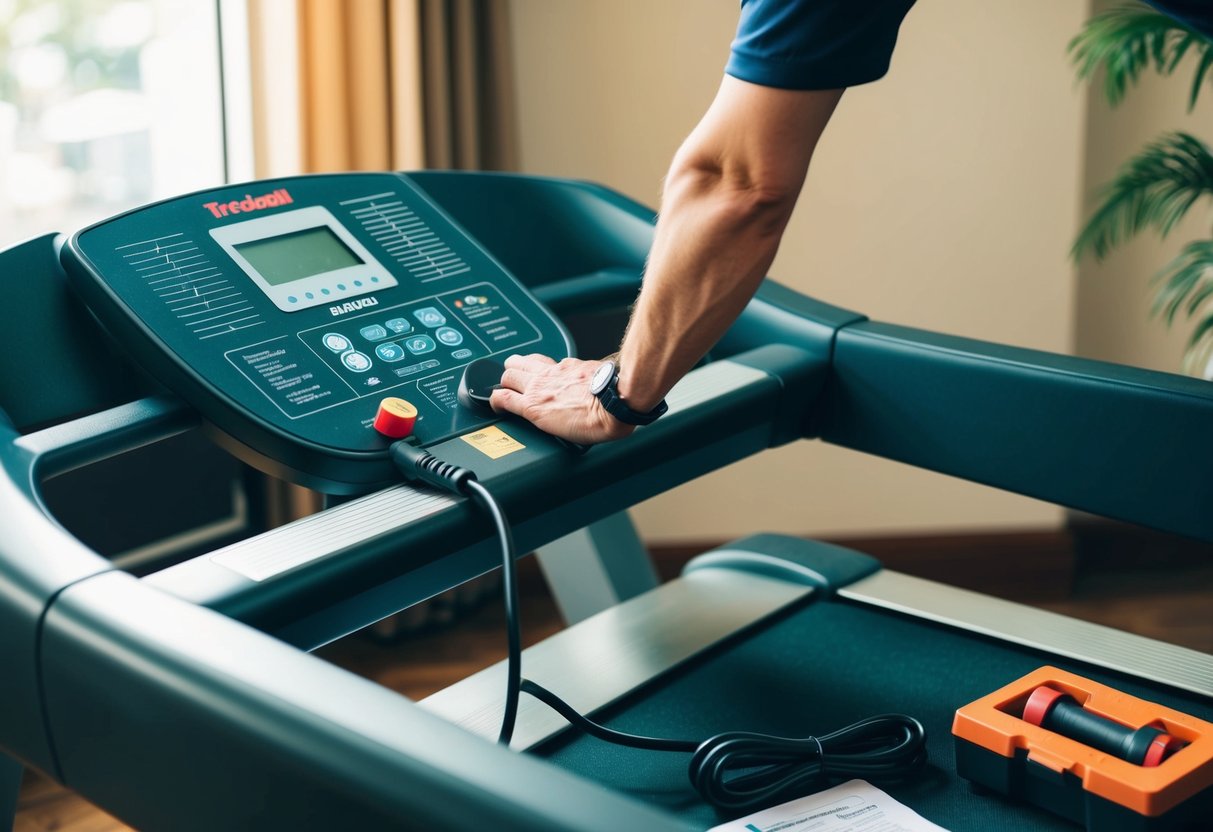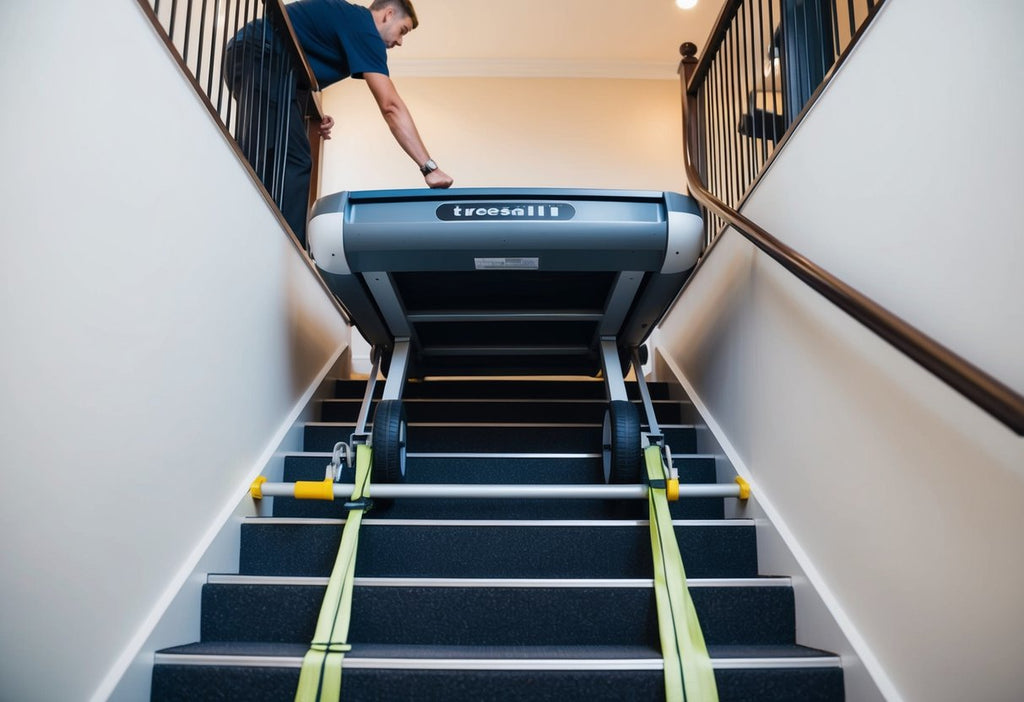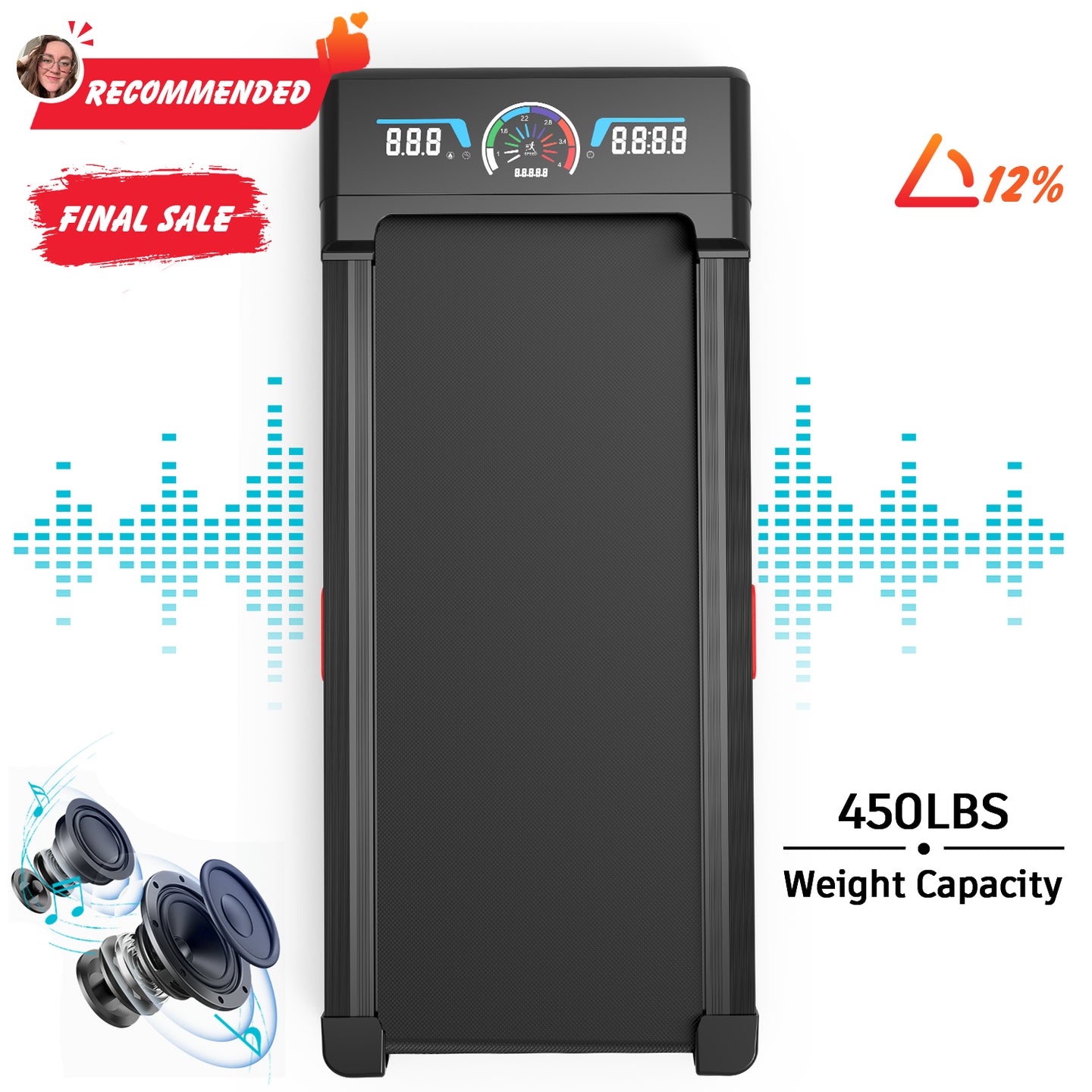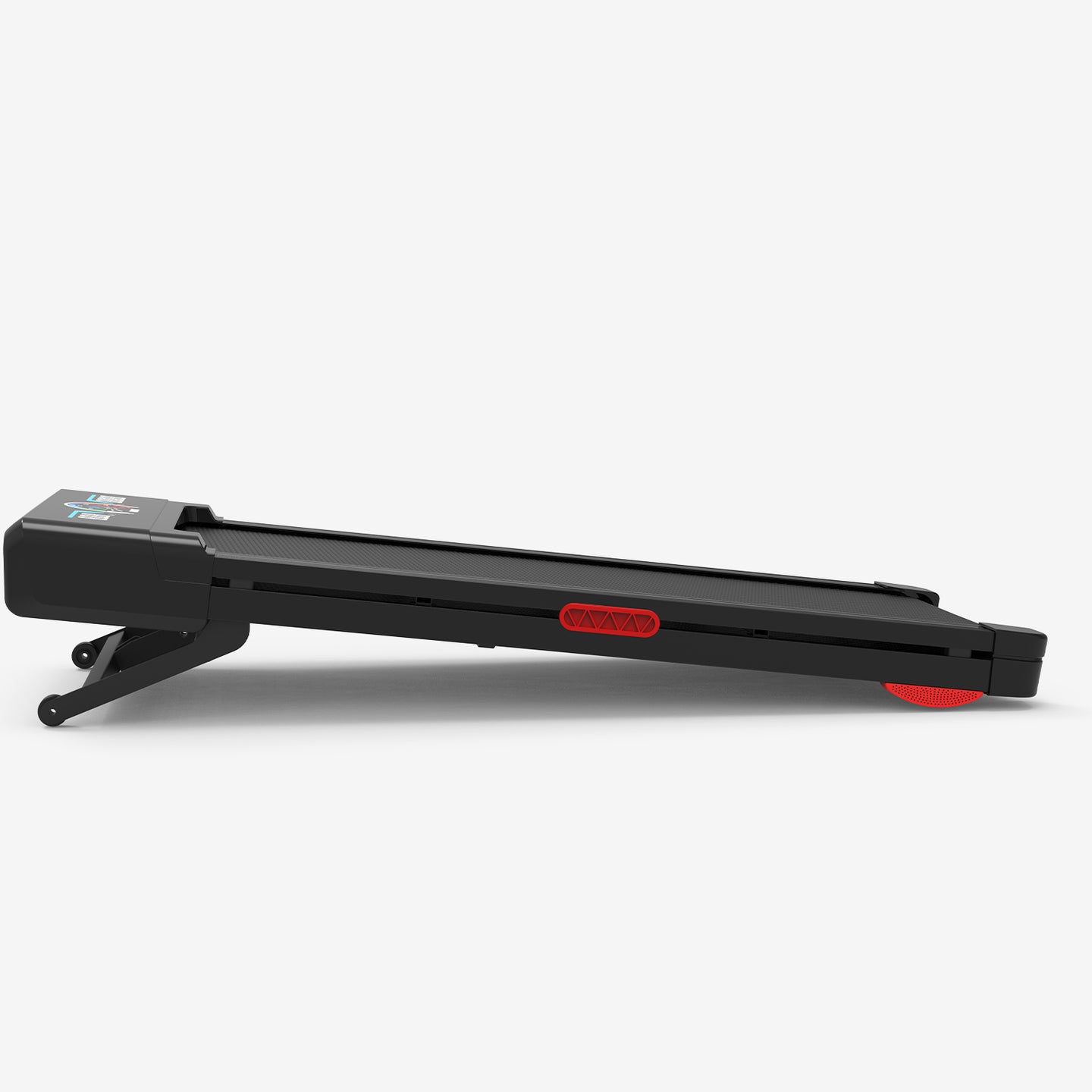Why Is My Treadmill Not Working

Why Is My Treadmill Not Working
Don’t forget to check out our Pacerocker, Trailviber, and Trailviber Auto Incline walking pad treadmills.
Dealing with a treadmill that's not working can be frustrating, especially when you're motivated to keep up with your fitness goals.
The most common reasons for a treadmill malfunction include slipping belts, electrical issues, or mechanical problems. Identifying the issue is the first step in getting back on track.
Let's explore some straightforward troubleshooting methods and essential maintenance tips that could help resolve the issue.
Our guide will address common mechanical problems and assess electrical components to provide practical solutions. If these don't work, it might be time to consider professional assistance.
Taking preventative care into account can also save us from future hassles. Establishing a routine for upkeep ensures a longer lifespan for our equipment and keeps it performing at its best.
Maintaining our treadmill is essential in securing a smooth and safe workout experience.
Key Takeaways
-
Start with basic troubleshooting to identify the problem.
-
Regular maintenance can prevent common issues.
-
Professional help may be necessary for complex problems.
Initial Troubleshooting
Before diving into repairs, let's explore a few quick checks. We'll verify the power source, inspect the emergency stop feature, and examine console issues. These steps are simple yet crucial to get our treadmill back to serving our fitness journey.
Check the Power Source
First, let's ensure the treadmill is plugged in properly. A loose plug or faulty outlet can be the reason for malfunction.
We should also inspect the power cord for any visible damage, such as fraying or cuts. If everything seems fine, test the outlet with another device to make sure it’s working.
Another key step is checking the circuit breaker. Overloading or a surge may have tripped it. If it's tripped, resetting it might resolve the issue. Pay attention to extension cords, too, as they can be problematic with treadmills.
Our final action here is verifying the power switch, usually located at the bottom front of the unit. Make sure it's correctly set to the "on" position. These small steps can often fix a non-responsive treadmill quickly.
Assess the Emergency Stop Feature
The emergency stop feature is critical for safety but can also halt functionality if triggered.
Ensure the safety key is properly inserted into its slot. Without it, our treadmill won’t run at all. A detached or improperly inserted key is a common oversight.
Inspect the safety key for wear and tear. If it’s lost or damaged, replacing it promptly is important to restore functionality. Testing its connection can help confirm the issue.
Sometimes cleaning the slot or magnet on the track helps solve the problem. Dust or debris may affect its operation. We should make sure that the area is clean and free from obstructions. This check safeguards both safety and operation.
Review Console and Display Issues
Let’s look at the treadmill console. Ensure that the display lights up and responds when buttons are pressed. If not, we might be facing a wiring or power issue.
Resetting the control panel by switching off and unplugging for a few minutes can help.
Checking for error codes on the display can also guide us towards specific problems. Referencing the treadmill manual, if available, lets us decode these signals. Simple fixes could be within reach based on these codes.
If buttons are unresponsive or only some functions are available, it might suggest damaged wiring or internal issues. Ensuring all connectors are tight and undamaged could be the key. Our display is vital for tracking workouts, so addressing these issues promptly keeps our fitness goals on track.
Maintenance Insights
Let's make sure our treadmill performs at its best. Regular checks on belt alignment, lubrication, cleaning, and motor inspection ensure optimal function and safety.
Belt Alignment and Tension
Proper belt alignment is crucial for smooth operation. We should check the belt position and ensure it is centered on the deck. Misalignment can lead to uneven wear and potential damage. If needed, adjust the alignment screws located at the rear of the deck.
Correct tension prevents slipping or excessive strain on the motor. A simple test involves lifting the belt's edge; it should only lift a few inches. If it’s too loose, we can tighten the tension screws. Regularly inspecting these aspects keeps our treadmill running efficiently.
Lubrication and Cleaning
Lubrication reduces friction between the belt and deck, preserving both components. Most treadmills need lubrication every three to six months, but it's best to refer to the manufacturer's guidelines.
We should use a silicone-based lubricant unless specified otherwise.
Regular cleaning is also vital. Dust, dirt, and sweat can accumulate, leading to wear or malfunction. We recommend wiping the console and belt area with a soft cloth weekly and vacuuming under and around the treadmill.
Motor and Drive Belt Inspection
The motor is the heart of our treadmill, so we should keep it in top condition. Start by periodically removing the motor cover to check for dust buildup, which can cause overheating. Cleaning with compressed air is effective.
Checking the drive belt is equally important. It should have no cracks, frays, or wearing. A loose drive belt leads to slippage, while a tight one stresses the motor. Adjust the tension if necessary, following the treadmill's manual. Regular inspections keep our treadmill in its prime working condition.
Common Mechanical Problems
To keep our treadmill in peak condition, we need to address some mechanical issues. We often encounter belt wear, roller displacement, and incline problems. Tackling these can save us from future headaches.
Identifying Belt Wear and Tear
Checking the treadmill belt regularly helps maintain its longevity. First, listen for unusual noises during use. A squeaky or grinding sound indicates a worn belt or misalignment.
Next, inspect the belt's surface for fraying or uneven textures. If it feels smooth, it's likely worn out. Measure the tightness by lifting the belt at the center: a few inches should be the limit. Over-slackness might indicate stretching, which affects performance.
Regular maintenance, such as cleaning and applying lubricant, can prolong belt life. Keeping it free of debris and dirt prevents unnecessary wear and tear. Make note of any cracks, as these signal a need for replacement.
Fixing Roller Displacement
Rollers control the belt's movement, and misalignment can halt our workout. To fix roller displacement, we first check for center alignment by looking at the gap between the belt and treadmill frame. If uneven, readjusting may be necessary.
Start by unplugging the machine for safety. Use the adjustment bolts typically located at the back of the treadmill to reposition. Turn the bolt clockwise for tightening or counter-clockwise for loosening until centered.
Additionally, ensure the drive roller, often located in front, is securely fastened. Loose fittings can result in improper belt movement. Regular checks prevent the belt from shifting or slipping during use, ensuring our safety and workout consistency.
Troubleshooting Incline Issues
Incline features failing to adjust can disrupt our training. First and foremost, check the power source and ensure all cables are firmly connected. Incline motors rely on a stable power supply.
Calibration might be needed if the incline feature isn't responsive. Refer to the user manual for specific steps. Typically, we start the treadmill, press incline buttons, and wait for the system to recalibrate.
Listen for any manual adjustments to avoid motor strain. If problems persist, inspecting the gears for obstructions or wear helps pinpoint the issue. Regular maintenance is the key to avoiding larger repairs.
Electronic Component Assessment
In this section, we focus on assessing electronic components that may affect treadmill performance, including control board functionality, wiring connections, and sensor calibration. Staying proactive in checking these components helps maintain a reliable workout experience. Let’s dive into these areas.
Control Board Functionality
The control board serves as the treadmill's brain, orchestrating all functions. When the treadmill becomes unresponsive or shows errors, inspecting the control board is critical.
We should start by checking any visible damage, such as burnt components or loose wiring.
Testing voltage across the board with a multimeter can pinpoint faulty parts. If the treadmill doesn't start, it might indicate a problem here. Replacing the control board may be required if other fixes fail. Contacting a professional technician may be necessary if it surpasses our comfort level.
Wiring and Connection Checks
Wiring issues can lead to operational failures or intermittent problems. We need to ensure all connections are secure, especially in high-vibration areas. A loose or frayed wire can disrupt the treadmill's power supply or data signals.
Examining wiring insulation for wear or damage helps us prevent future issues. Pinched or exposed wires could create short circuits or cause electric shocks. Using a continuity tester ensures the integrity of these connections, confirming uninterrupted electrical flow.
Sensor and Speed Calibration
Sensors and speed calibration ensure the treadmill responds accurately to our commands. If the treadmill speed fluctuates unpredictably or sensors fail to detect safety keys, it's time for calibration. Misaligned or dirty sensors may result in improper diagnostics.
Periodically cleaning sensors and ensuring proper alignment would enhance performance. We must refer to the manufacturer’s guidelines for recalibrating speed settings. Calibration adjusts the speed feedback loop, ensuring an enjoyable and effective workout.
Advanced Diagnostics
To efficiently resolve treadmill issues, we can explore error codes that provide us with specific fault details and learn how to update software for optimal performance. By doing so, we can pinpoint the exact areas that need attention and take effective action.
Error Code Interpretation
When a treadmill displays an error code, it's our direct line of communication with the machine. These codes can indicate issues like motor problems, belt misalignment, or electronic failures. Each code usually has a corresponding meaning in the user manual.
For convenience, keeping a list of common error codes handy is beneficial. Manufacturers often publish these lists either in the manual or online.
By quickly identifying the meaning of a code, we can address minor issues ourselves or decide when to contact support.
Sometimes, an error code might reveal the need for a simple fix, such as adjusting the belt tension. Other times, it could be a sign of a more complex issue requiring professional repair. Understanding these codes empowers us to maintain our treadmill's peak performance.
Performing Software Updates
In our pursuit of a well-functioning treadmill, keeping its software up to date is crucial. Software updates often include improvements and bug fixes that can enhance the machine's performance and user interface.
First, check the manufacturer's website for any available software updates. If updates are present, we need to follow the specific instructions provided, which may involve downloading files or connecting the treadmill to a computer.
Ensuring the treadmill's software is current not only improves reliability but also maximizes safety features. Staying proactive with software updates helps us avoid potential malfunctions and ensures our equipment runs smoothly.
Professional Assistance and Services
Sometimes, understanding when to bring in a professional can save us time and prevent additional damage. Recognizing the right moments to seek help and leveraging warranty options can make all the difference.
When to Call a Technician
If our treadmill stops abruptly, shows error codes, or has electrical issues, it's wise to consult a technician. Some problems can be hazardous, like frayed cords or unusual burning smells. Technicians bring specialized knowledge and tools to diagnose and fix these complex issues.
We might attempt to troubleshoot minor problems, like belt misalignment, but persistent issues typically need professional eyes. Regular maintenance by technicians can also extend the lifespan of our equipment.
Warranty and Manufacturer Support
Checking our treadmill's warranty is essential before seeking repairs. Many manufacturers offer free or discounted services within the warranty period. We should familiarize ourselves with what's covered, whether it includes parts, labor, or both.
Contacting the manufacturer’s support team can also provide us with authorized service centers. Certified technicians ensure our treadmill remains in optimal condition while maintaining the warranty. This is especially crucial if original parts are needed for replacements.
Preventative Care Tips
Maintaining a treadmill involves regular upkeep and attention to detail. We can ensure our equipment functions smoothly and lasts longer by adopting a consistent maintenance routine and adhering to best practices.
Regular Maintenance Schedule
To keep our treadmill in top shape, it's essential to follow a regular maintenance schedule.
Begin by wiping down the treadmill after each use to remove sweat and dust. A soft cloth with mild detergent works well.
Inspect the belt and deck monthly. If we notice any signs of wear, it's crucial to address them immediately. Adjusting the belt tension and aligning it is vital. An improperly aligned belt can cause excessive wear and tear.
Lubricating the treadmill also plays a significant role. Most models require lubrication every three months or every 150 miles. Using a silicone-based lubricant typically recommended by the manufacturer will prevent friction and extend the treadmill's lifespan.
Best Practices for Longevity
To extend the life of our treadmill, it's beneficial to follow best practices.
Ensure the treadmill is placed on a level surface. If it's on an uneven floor, it can influence the machine's balance and operation.
Use a surge protector to guard electrical components from power spikes. This simple step protects our investment and prevents unexpected malfunctions.
Moreover, encourage all users to wear proper footwear.
Running or walking in clean, non-slip shoes can reduce the amount of foreign substances introduced to the equipment.
Regularly vacuuming around and under the treadmill keeps dirt away from the motor.
It's these small, consistent steps that make a big difference in treadmill longevity.
Frequently Asked Questions
Treadmill issues can often be resolved with a bit of troubleshooting. Let's explore some specific steps and tips.
What are the steps to troubleshoot a treadmill that won't start?
First, ensure the treadmill is plugged into a working outlet.
Check the circuit breaker and reset it if needed. Examine the safety key; it must be in place for the treadmill to operate.
These steps can often resolve the issue quickly.
How can I diagnose my treadmill if it stops working suddenly?
Inspect the power cord and plug for any damage. Confirm all connections are secure.
Look for any error codes on the display panel, which can indicate specific problems. This information can guide you to the right solution.
Can you advise on fixes for a treadmill belt that's not moving?
Ensure the treadmill is off before starting.
Check the belt for misalignment and adjust it using the alignment screws. Lubricate the belt if it's squeaky or sticky, as friction can hinder movement.
These fixes might just get it rolling again.
What might be the reasons for a treadmill to have power but remain non-operative?
Faulty wiring or a damaged circuit board could be the culprit. A malfunction in the motor or the motor control board can also cause this issue.
Consulting the user manual might help pinpoint the problem.
Where can I find professional treadmill repair services?
Look for certified technicians in your area. Many manufacturers have service centers or authorized repair partners listed on their websites.
These professionals can offer reliable repair solutions.
What regular maintenance should I perform to prevent treadmill malfunctions?
Regularly clean the treadmill, especially under and around the belt.
Lubricate the belt as recommended by the manufacturer.
Check for loose screws and tighten them.
Keeping up with these tasks can extend the life of your treadmill.
Troubleshoot your treadmill with ease! Learn key fixes for power issues, belt problems, and console errors to get back to your fitness routine quickly.







